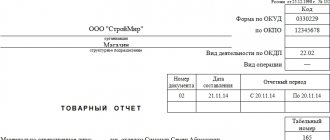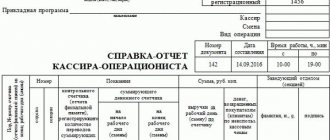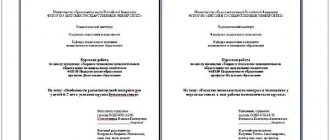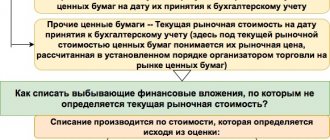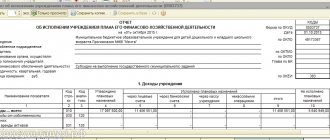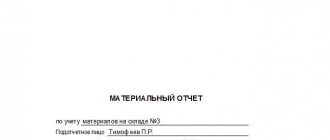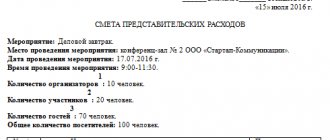Business communication, business conversations, meetings, negotiations, discussions: as a form of business communication
Business communication should be distinguished from ordinary communication, since the former pursues a specific goal and has strict ethics of behavior, while the latter may not have any basis or reason.
There are many forms of business communication, the main ones include:
- business conversations - represent the exchange (or one-way transfer) of information on specific issues of business functioning. This can be direct communication or indirect (using Internet technologies, telephony). This type of communication involves its continuation in the form of negotiations or meetings;
- meetings are a larger form of communication, in which, as a rule, company employees (usually heads of structural divisions) are involved to resolve strategic issues for business development;
- negotiations – have a specific goal and are aimed at discussing important issues, concluding agreements, contracts, signing documents important for both parties;
- discussions - open discussion of important company issues, the main tool of which is brainstorming (generation of ideas by all parties), as a result of which non-standard approaches to solving problems may arise.
In addition to the listed forms, there is a whole range of them: business interviews, disputes, meetings, correspondence, presentations, conferences. They all have their own specifics, but comply with the same rules of business ethics.
Business meetings: tasks, goals, topics
Business meetings are held in order to develop a specific solution to a pressing problem or task. In addition, at meetings, department employees can share with management their ideas on possible solutions to any issues. This form of communication allows you to comprehensively see the situation in the company, its weaknesses and strengths, contributes to the entry of new people into the team, their acquaintance with the corporate culture and norms adopted in the organization.
The main goals and objectives of the meetings are:
- maintaining company policy, as well as its development and communication to all employees;
- integration of the actions of all services and divisions in accordance with the strategic goal of the company;
- identifying new tasks and assessing the effectiveness of already implemented campaigns;
- resolving emerging issues.
The topics that are present at meetings can be completely different.
In Russian practice, it is customary to hold planning meetings at least once a week. Thus, department heads report on the work done during the week and set plans for the next one (or receive tasks to implement within the upcoming work week).
The reason or topic for an unscheduled meeting can be a number of issues that arise in connection with the dynamic and changing external environment in which companies have to operate.
Business trips report example of negotiations report
A business trip is an employee’s departure for a certain period to perform official tasks established by the manager in an area remote from the workplace. The duration of the business trip is set by the employer, taking into account the complexity of the goal.
The employer procedurally accompanies many situations that exist in labor relations, and trips to perform certain functions are no exception. The travel purposes of workers in different positions will differ: the tasks of an engineer and an accountant certainly cannot be the same. The purpose of the business trip in the travel certificate and the examples of its execution given below will help you correctly draw up documents related to travel.
The legislation of the Russian Federation regulates issues related to business trips in such regulations as:
WATCH THE VIDEO ON THE TOPIC: Alternative Solutions in Negotiations.
Dismissal. “Up in the Air” Film Purpose of the business trip According to the law, during a business trip, an employee carries out an official assignment from the employer.
This task, as the purpose of the trip, is formulated in the official assignment. By the Decree of the State Statistics Committee of the Russian Federation, other documents related to business trips were no longer considered necessary by law. By Government Decree of However, most employers are not going to refuse these documents altogether, fearing confusion in calculations and document flow.
To do this, they include clauses in local regulations on business trips on the execution of relevant documents in the form approved by the organization, which may be the unified form of the State Statistics Committee. An example of a business trip report can also be provided there as a sample. In this material you can familiarize yourself with a sample job assignment.
However, when filling out a business assignment for a business trip, one of the following documents is always indicated as the basis for the referral:. Often there are enough general instructions on how to complete the assigned task in whole or in part.
Types, types and classification of business meetings
Business meetings can vary in form, topic and persons present.
Their main classification is presented below:
- by belonging to a specific area: administrative meetings (to resolve problematic issues), scientific (conferences, symposiums, seminars organized and conducted to resolve current issues in the scientific field), political (congresses and meetings of members of certain political movements) and mixed types;
- by scale and number of participants: international (with the involvement of foreign partners, specialists, experts in a certain field), national, regional, city;
- at the location of the event: offsite and local meetings;
- according to the regularity of holding: periodic, permanent meetings.
In addition to the presented classification, meetings can be divided into problem-based, operational and instructive.
Problem meetings are aimed at finding optimal solutions to problems in a short time.
Operational (or they are also called control rooms) are aimed at obtaining data on the current situation of the company. All information from subordinates is accumulated by department heads and then transferred to the chief executive of the organization. This is data on the extent to which plans were implemented, goals were achieved, and tasks were solved. The main difference between such meetings and all others is their regularity, the constancy of the list of participants and the possible absence of a meeting agenda (that is, its detailed plan).
Instructional meetings have the reverse order in contrast to control rooms - all information in a directive format goes down from the manager to direct subordinates, and is then transmitted along the vertical power structure in the organization to specific performers of certain tasks. Such information includes management orders that may affect the current progress of the organization, new rules, norms of behavior, and deadlines for completing specific tasks.
Preparation, organization and holding of business meetings
In order for the meeting to be effective, it is necessary to carefully consider its main points: the purpose of the meeting, the main tasks, the stages of the event. Only under such conditions can you benefit from the meeting.
Unfortunately, many of them are carried out only because it is customary in the business environment. Regular meetings and meetings at the beginning of the week with management in many companies have become commonplace and lost their meaning.
However, large companies that strive to develop and win large market shares approach this issue with great scrupulousness:
- the list of meeting participants is determined;
- its agenda is developed for a long period, to which adjustments are made over time;
- priority remains given to strategic objectives, on which department heads report.
Generally Allowable Costs of Representation
When making entertainment expenses, documentation is necessary only for official expenses, which include (clause 2 of Article 264 of the Tax Code of the Russian Federation):
- Conducting official receptions, meetings and meetings (breakfasts, lunches and other similar expenses are taken into account), taking place both on the territory of the organization and outside it (restaurants, hotels). This category also includes spending on alcoholic beverages.
- Transportation costs for transporting guests to and from the event venue.
- Buffet services and costs.
- Payment for the work of translators who are not on the company’s staff.
Expert opinion
Grigoriev Pavel Kirillovich
Head of the department for conscription of citizens for military service of the Russian Federation
The Tax Code of the Russian Federation does not specify the list of alcohol costs. Therefore, they can be taken into account without applying additional limits, but taking into account the general restrictions established by law for entertainment expenses.
This is important to know: Raising the age limit for military service under contract
Stages and technologies of conducting a business meeting
Each meeting has two main stages: preparation and actual holding.
At the first stage, the relevance of the event is determined, its goals and objectives are set, a list of participants is formed, reports and presentations are prepared in accordance with the agenda.
At the second stage, issues in which all those present can take part are covered directly according to the existing agenda. As a rule, the company's management is the chairman of the meeting and sets the tone for it, gives the right to speak, and stops the discussion if it goes beyond the scope of constructive discussion.
In addition to the main stages, a meeting may include a decision-making stage if it involves solving a problem. This can happen through discussion or voting.
How to write a business trip report: sample
Correctly executed documents will help:
- obtain accurate information about the results of achieving your goals;
- confirm expenses when calculating the base for income tax, the single tax under the simplified tax system, and will also remove questions regarding the taxation of personal income tax on payments to an employee.
Documenting a business trip requires three steps: Step 1.
Planning a business trip and drawing up an official assignment based on its results. Step 2.
Issuance and approval by the director of a company or individual entrepreneur of an order to send an employee on a business trip. Step 3. Upon return, the employee describes the results achieved in the business trip report and reports on the expenses incurred in the advance report for the business trip.
He also attaches supporting documents. The unified business trip report form was mandatory for completion until the end of 2014. Let us recall that form No. T-10a “Office Assignment” had a special section for writing a report on the completion of the assignment.
Posted workers were required to fill it out. From 01/08/2015, this business trip report form is no longer mandatory to fill out.
But in practice, employers continue to use it.
We have listed the reasons above. Moreover, employers use independently developed forms of business trip reports established in local regulations (LNA), or allow employees to write reports in free form. The obligation for employees to fill out business trip reports should also be enshrined in the LNA.
Next we will look at examples of business trip reports. Using a trip report allows you to:
- the employee - to explain to what extent he has achieved his goal and completed the task assigned to him.
- the employer - to monitor the fulfillment of the task assigned to the posted employee;
The unified business trip report form in form No. T-10a “Office Assignment” contains:
- name of the employing company or individual entrepreneur;
- number and date of registration;
Business meeting plan example
With a detailed meeting plan in hand, you can confidently know that it will be effective.
Such a plan may include:
- welcoming speech from the manager - summing up the results for a certain time (quarter, month, week);
- coverage of the problem, justification of its relevance for the company;
- organizing a brainstorming session to solve it;
- assessment of all available options;
- accumulation of options for solving the problem;
- voting or other decision-making option on the use of specific tools to resolve the problem;
- determining the boundaries of solving the problem: deadlines, responsible persons, methods.
During the meeting, it is important to record its main points in order to be able to return to a particular issue and consider it in more detail.
Business meetings at exhibitions and congresses of the Expocentre
One of the effective means of promoting products is holding business meetings as part of exhibitions and congresses held at the Expocentre Fairgrounds. Business meetings of this format are somewhat different from others. If the management team of one enterprise gathers at a regular meeting, then during the exhibition any manufacturer has a unique opportunity to comprehensively solve the problems of the enterprise and invite all suppliers and distributors of products.
Specially equipped rooms for business meetings and congress halls of the Expocentre Fairgrounds are designed for different numbers of people. Therefore, there are no problems with accommodating all participants. Using the MatchMaking system, you can agree on the time of the meeting in advance. Presentation technology will make the meeting more eventful and complete.
Visit and participate in interesting events and exhibitions in a month convenient for you!
Read an interesting selection of articles and useful information.
Business negotiations are a means, an interaction between people, designed to reach an agreement when both parties have coinciding or opposing interests.
Negotiations are intended to obtain an agreement through a mutual exchange of views and achieve results that would suit all its participants. Negotiations consist of speeches and counter-speeches, questions and answers, objections and evidence. Negotiations can proceed easily or tensely, partners can agree among themselves without difficulty or with great difficulty, or not reach an agreement at all. Therefore, for each negotiation it is necessary to develop and apply special tactics and techniques for conducting them. The generalized scheme for conducting them is as follows: preparation of negotiations; conduct of negotiations; completion of negotiations.
Preparation of business negotiations. The success of negotiations largely depends on how well you prepare for them. Before negotiations begin, it is necessary to have a developed model:
- clearly understand the subject of negotiations and the problem being discussed; the initiative in negotiations will be with the one who knows and understands the problem better;
- be sure to draw up an approximate program and scenario for the course of negotiations;
- outline moments of your intransigence, as well as problems where you can give in if a deadlock in negotiations unexpectedly arises;
— determine for yourself the upper and lower levels of compromise on issues that, in your opinion, will cause the most heated discussion.
Conduct of negotiations. In management practice, the following main methods are used when conducting business negotiations: variation method, integration method, balancing method, compromise method.
Variational method.
When preparing for difficult negotiations (for example, if you can already foresee a negative reaction from the other party), consider the following questions:
- What is the ideal solution to the problem posed in a complex?
— what aspects of the ideal solution can be abandoned?,
— what arguments are needed in order to properly respond to the expected proposals of the partner?
— what forced decision can be made in negotiations for a limited period?
— what extreme proposals from a partner should definitely be rejected and with what arguments?
Integration method.
Designed to convince a partner to evaluate the issues of negotiations taking into account their wide possibilities. Express your position to your partner and emphasize what actions you expect from him within the framework of joint responsibility for the results of the negotiations.
Balancing method.
When using this method, keep the guidelines below in mind. Determine what evidence and arguments (facts, calculation results, statistics, numbers, etc.) should be used to encourage your partner to accept your offer. You must mentally put yourself in your partner’s shoes for a while, i.e. see things through his eyes. Consider the complex of problems from the point of view of the “for” arguments expected from your partner and bring to the consciousness of your interlocutor the associated advantages.
Compromise method.
Negotiators must show a willingness to compromise: in case of divergent interests of a partner, an agreement should be achieved in stages. In a compromise solution, agreement is achieved due to the fact that the partners, after a failed attempt to reach an agreement among themselves, partially deviate from their demands (they refuse something, put forward new proposals).
The above methods of negotiation are of a general nature; in addition, there are a number of techniques that detail and specify their application.
1. Meeting and making contact.
Even if it’s not a delegation that comes to you, but just one partner, you need to meet him at the train station or airport and take him to the hotel. Depending on the level of the leader of the arriving delegation, it may be met either by the head of our delegation himself, or by one of the participants in the upcoming negotiations. The conversation preceding the start of negotiations should be of the nature of an easy conversation. At this stage, business cards are exchanged, which are presented not during the greeting, but at the negotiating table.
2. Attracting the attention of the negotiation participants (the beginning of the business part of the negotiations). When your partner is confident that our information will be useful to him, he will be happy to listen to you. Therefore, you must arouse the interest of your partners.
3. Transfer of information.
This action is to convince the negotiating partner, based on the aroused interest, that he will act wisely by agreeing with our ideas and proposals, since their implementation will bring tangible benefits to him and his organization.
4. Detailed justification of proposals (argumentation) . A partner may be interested in our ideas and proposals if he sees the possibility of applying these ideas and proposals in his organization. Therefore, the next step in the business negotiations procedure is to identify the interests and eliminate the partner’s doubts (neutralization, refutation of comments).
5. Completion of negotiations. If the progress of the negotiations was positive, then at the final stage it is necessary to summarize, briefly repeat the main points that were touched upon during the negotiations, and, most importantly, the characteristics of those positive points on which the parties agreed. It is also advisable, based on the positive results of the negotiations, to discuss the prospect of new meetings. If the outcome of the negotiations is negative, it is necessary to maintain subjective contact with the negotiating partner, i.e. It is necessary to abandon summing up the results of those sections where no positive results were achieved. It is also advisable to find a topic that will be of interest to both parties, will defuse the situation and help create a friendly, relaxed atmosphere of farewell.
Protocol events are an integral part of negotiations and carry a significant burden in solving the tasks set at the negotiations.
Business protocol covers a wide field of activity: organizing meetings and servicing negotiations, recording conversations, exchanging souvenirs, uniforms, cultural programs, etc. To resolve these issues, it is advisable to create a protocol group (2-3 people) in the organization, which will deal with protocol formalities.
Analysis of the results of business negotiations. Negotiations can be considered completed if their results are carefully and responsibly analyzed, if the necessary measures are taken for their implementation and certain conclusions are drawn for preparing the next negotiations.
Conditions for effective negotiations. The prerequisites for the success of business negotiations affect a number of both objective and subjective factors and conditions. First of all, negotiating partners must fulfill the following conditions: both parties must have an interest in the subject of negotiations; they must have sufficient power to make final decisions (corresponding right to negotiate); partners must have sufficient competence and necessary knowledge regarding the subject of negotiations; be able to take into account the subjective and objective interests of the other party as fully as possible and make compromises; Negotiating partners must trust each other to a certain extent.

